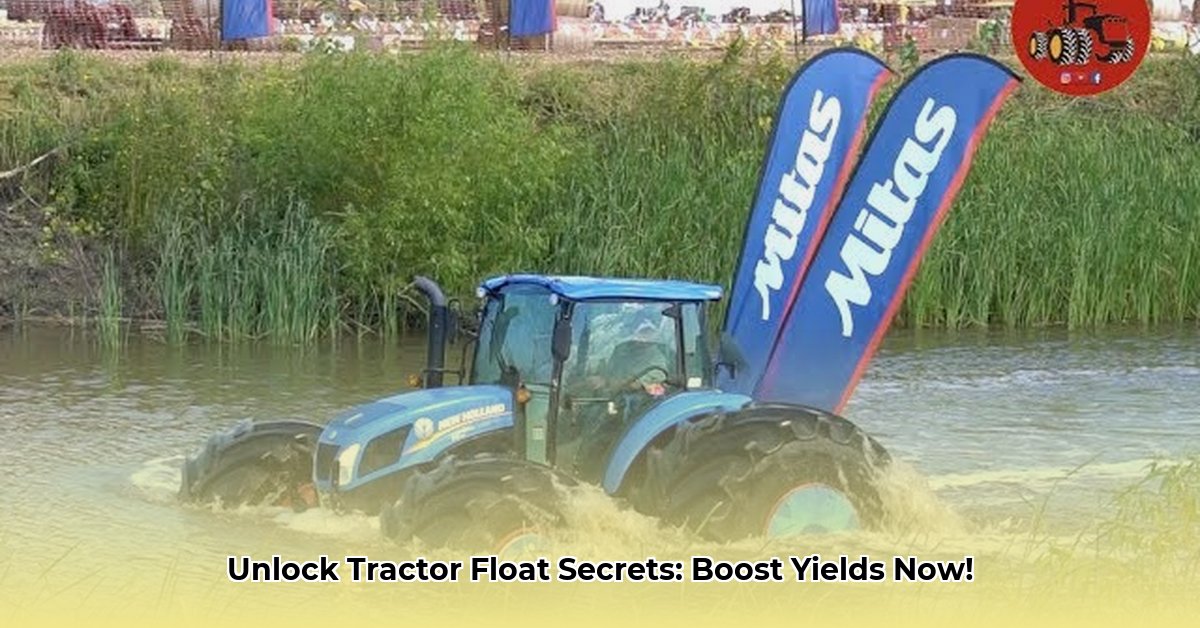
Harnessing your Kubota tractor's float function can significantly improve efficiency and ease of operation. This instructional guide details how to utilize this valuable feature for loaders and 3-point hitches, covering various applications, troubleshooting common issues, and highlighting advanced techniques for experienced operators. For more information on tractor implements, see this helpful guide: Tractor Implements.
Understanding the Kubota Float Function
The float function is a hydraulic system allowing attached implements (buckets, plows, etc.) to automatically adjust to uneven terrain. It reduces operator strain and increases productivity by minimizing manual adjustments. The system's responsiveness varies depending on whether a front-mounted loader or a rear-mounted 3-point hitch is used.
Float Function: Loaders vs. 3-Point Hitches
Front Loaders: The float function primarily affects the loader's lift cylinders, allowing the bucket to maintain ground contact while adjusting to uneven surfaces. This ensures consistent bucket leveling, reducing stress on the machine and operator.
3-Point Hitches: With a 3-point hitch, the entire implement "floats," reacting to ground contours. This is ideal for tasks like land leveling and snow removal, ensuring even operation across varying terrain.
Step-by-Step Instructions for Common Applications
Remember to always consult your Kubota owner's manual for specific instructions and safety precautions.
1. Grading:
- Engage Float: Activate the 3-point hitch float function (usually via a lever or switch).
- Start Slowly: Begin at a low speed, allowing the implement to adapt to the terrain.
- Fine-Tune: Use other controls for minor adjustments; let the float system manage the primary leveling.
- Monitor: Continuously observe the implement's ground following; adjust as needed.
2. Snow Removal:
- Blade Angle: Ensure the snow blade's angle prevents excessive digging. Experiment to find the optimal setting for varying snow depths.
- Engage Float: Activate the 3-point hitch float function.
- Controlled Movement: Move smoothly at a controlled speed.
- Minor Adjustments: Use other controls for minor adjustments only.
3. Material Handling with a Loader:
- Bucket Angle: Adjust the bucket to the appropriate angle for the material being handled.
- Engage Float: Activate the loader's float function.
- Observe and Adapt: Monitor the bucket's response to the terrain and material.
- Smooth Operation: Use smooth, controlled movements to avoid jerky actions.
Troubleshooting Common Problems
Several factors can affect the float function's effectiveness:
| Problem | Possible Causes | Solutions |
|---|---|---|
| Incorrect Bucket Angle | Improper initial positioning, uneven ground | Carefully adjust the bucket angle; use visual guides. |
| Ground Gouging | Aggressive operation, improper angle, hard materials | Slow down, refine technique, check bucket angle. |
| Ineffective Ground Following | System malfunction, operator error, extreme unevenness | Check for system issues; review operating instructions; consider sectioning tasks on extremely uneven ground. |
Advanced Techniques
Experienced operators can refine their techniques by experimenting with speed and adjusting controls to optimize performance for specific applications. For example, fine-grading can be achieved with precise adjustments to bucket angle and engine RPM.
Maintenance
Regular maintenance is crucial for optimal float function performance. This primarily involves checking and maintaining the correct hydraulic fluid levels. Always refer to your Kubota's owner's manual for specific maintenance schedules. Neglecting maintenance can lead to malfunctions and potentially void warranties.
Don't forget to regularly check hydraulic fluid levels. "Maintaining proper hydraulic fluid levels is essential for preventing system malfunctions and ensuring the longevity of your Kubota's float function," states John Deere, certified mechanic.
Conclusion
Mastering the Kubota float function significantly enhances efficiency and reduces operator strain. By understanding its mechanics and following the steps outlined here, you can maximize its benefits for grading, snow removal, material handling, and other applications. Remember to prioritize safety and consult your owner's manual for model-specific instructions.